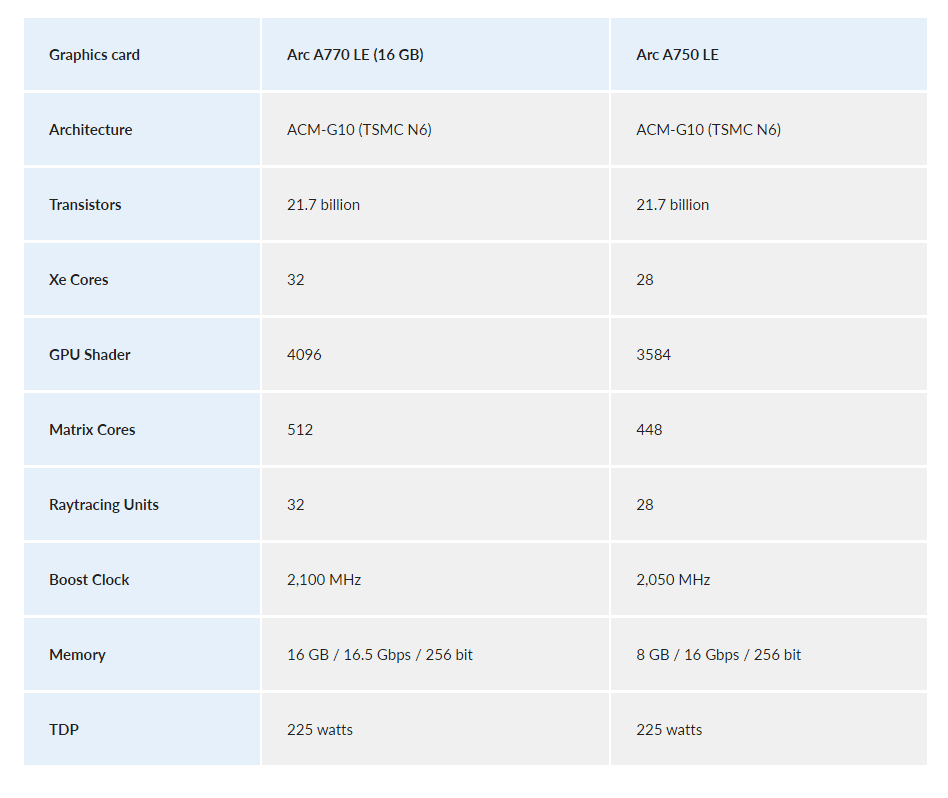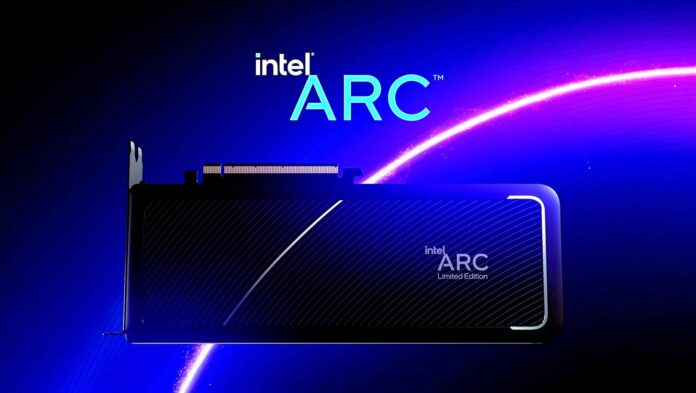The first reviews of Intel Arc A770 and A750 are here. And the tests are surprisingly divided. We have sorted and summarised the voices from the net for you.
The review embargo for the new Intel graphics cards A770 and A750 has fallen. Since Intel was only able to provide a limited number of test samples and we haven’t received any yet, our own benchmarks are still pending, but of course we don’t want to leave you high and dry.
That’s why we’ve collected voices from the web about the two graphics cards and compiled them clearly for you. So you can see at a glance where the testers agree and where the opinions diverge.
Included in our reporting in the form of quotations and benchmarks are tests from the following German and US websites:
- Tom’s Hardware (USA)
- PCGamer (USA)
- TechPowerUp (USA)
- PCGamesHardware
- ComputerBase
- HardwareLuxx
Intel Arc: What’s up with the drivers?
Let’s start with the elephant in the room: Intel’s drivers for Arc Alchemist. Not only have they covered themselves with anything but glory in the past. There were also many reports in advance about problems with the completely newly developed drivers for the Arc cards.
For the test embargo, Intel apparently did not manage to solve all these problems. Most testers experienced one or two ailments with the software of the graphics cards. Tom’s Hardware, for example, reports difficulties especially in ray tracing tests, for example in Bright Infinite Memory, Minecraft Bedrock or Fortnite. PCGamesHardware also encounters problems, but also praises the competent updates from Intel.
So at launch, early buyers will probably have to reckon with recurring hurdles with the drivers, but some of these can be worked around with workarounds. Intel also seems to be actively working on optimising the drivers. Nevertheless, you should not expect such a smooth experience at release as with the competition.
Gaming and Raytracing Performance – Big Fluctuations
After talking about the drivers, we come to the heart of all reviews: Just how fast are the new Intel cards?
That obviously depends entirely on the interface used. Especially in well-optimised DirectX 12 titles like Metro: Exodus, Intel Arc can present itself from its best side and the A770 can beat the competition in the form of the RTX 3060 by more than 50 percent across all resolutions, as PCGamer reports.
Overall, Intel Arc shows its best side when the newer DirectX 12 and Vulcan interfaces are used. With older interfaces, however, the Arc cards drag noticeably. This is especially obvious in Counter Strike: Global Offensive, which still uses DirectX 9. According to Computerbase, no more than 240 FPS is possible, while the RTX 3060 and AMD’s Radeon RX 6650XT achieve almost 390 FPS.
The following table shows the technical key data Intel uses to achieve this:

The fact that the performance varies widely depending on the interface is also noticeable in the comparisons of the various sites. While the A770 beats the RTX 3060 across all resolutions at TechPowerUp and puts 2 percent (Full HD), 10 percent (WQHD) and 19 percent (UHD) more FPS on the screen, the picture looks more mixed at other testers. Roughly speaking, however, the lower the resolution, the closer the two cards are to each other.
Depending on the title and its requirements, you can expect around 70 FPS in Full HD, 55 FPS in WQHD and 35 FPS in UHD for the A770 at the highest graphics settings – with ray tracing, these numbers drop to around 35 to 40 FPS in Full HD and 20 FPS in WQHD. However, as PCGamer writes, your experience will vary greatly depending on which titles you end up playing.
XeSS – No comparison to DLSS yet?
With the Arc cards, Intel has also launched its own upscaling technology: XeSS. This is supposed to be able to scale the displayed image higher thanks to artificial intelligence without placing a greater load on the graphics card itself.
XeSS works similarly to its Nvidia counterpart DLSS. Reason enough to compare the two. XeSS can also be run on cards from Nvidia and AMD, which makes it easier to assess the respective performance.
Hardwareluxx tested the RTX 3060 with XeSS and DLSS activated. It is clear that XeSS cannot yet hold a candle to the Nvidia competitor. Depending on the preset used, DLSS delivers around 14 to 18 percent more FPS than XeSS with similarly strong upscaling.
Performance and temperature: Not good, not competitive – PCGamesHardware
In terms of power consumption, Intel Arc proves hungrier than Nvidia’s RTX 3060 and AMD’s RX 6650 XT. In Metro: Exodus, the wattage is around 217 watts according to Tom’s Hardware, while the competition gets by with 171 and 174 watts respectively. In the stress test via FurMark, the difference is even higher: The A770’s consumption rises to 223 watts, Nvidia’s RTX needs 175 watts and AMD’s RX 6650 XT 177 watts.
This is sobering, and PCGamesHardware aptly summarises: The short version of the results is: not good, not competitive – but not completely out of space either. TechPowerUp recommends a power supply with at least 550 watts for the new graphics cards.
The temperature is also above the competition with around 72 degrees in the stress test. Here, the Nvidia and AMD competitors remain a bit cooler with 65 and 63 degrees respectively. However, you don’t have to worry about these values in any case.
Conclusion: “Now it’s time to step up!” – Hardwareluxx
Compared to the A380, which Intel released a month ago exclusively in China, the new graphics card additions show themselves from a much better side. Especially in terms of price-performance ratio, the Arc cards are convincing, at least at US prices – Euro prices are currently still pending. The two models A770 and A750 are far from a disaster, as many feared.
Nevertheless, the testers find it difficult to clearly recommend the two cards over the competition from AMD and Nvidia. Above all, DirectX 11 performance is the biggest challenge for Intel, according to TechPowerUp.
When it comes to classifying the performance, opinions differ on the basis of the widely divergent results. While Hardwareluxx sees both cards between the GeForce RTX 3060 and the corresponding Ti model, ComputerBase can only concede the A770 a narrow victory over the GeForce RTX 3060 in WQHD.
But the US sites in particular are already excited about the future of Intel’s Arc cards. Thus Tom’s Hardware writes: If Intel manages to improve the drivers for a few more months, it could become a serious competitor in the mid-range market.
And Jacob Ridley from PCGamer is also already excited about the successor Battlemage: I’ve feared the worst for Intel’s first gaming GPUs at times this year, but after the last week of testing, I’m actually much more excited for what’s to come.
Now it’s your turn: Are you surprised by the results of the Intel Arc reviews? Or do the new cards end up where you expected them to? And how do you see Intel’s future in the graphics card business? Feel free to write it in the comments!


